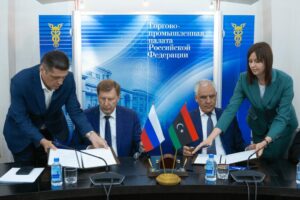Eight years after President Muhammadu Buhari promised to incentivise investment in the Nigerian maritime sector, including ports, and scale up the infrastructure to global standards, the sector continues to bear the brunt of abandonment and poor funding.
From road networks to modern facilities, ports in Nigeria, the largest economy in Africa, have taken the back seat, behind Togolese, Ghanaian and Beninoise ports.
Nigerian ports are reputed to be one of the most expensive, and somewhat, inefficient in the West and Central African sub-region, making the ports unattractive to importers, who prefer diverting Nigeria-bound cargoes to more efficient ports in the region, thereby, affecting the nation’s revenue generation and cargo throughput.
This was due to issues with dilapidated port infrastructure, long cargo dwell time, poor vessel turnaround time, a long clearing process and port congestion, resulting from traffic gridlock within the port corridor.
Figures gleaned from the Budget Office suggest that the Federal Government’s direct budgetary allocation to the port facilities in the past eight years was a paltry N1.7 billion – a figure experts have dismissed as a drop in the ocean when compared with the investment needs of ports across the country.
Government hid under its concessionning arrangement to evade fresh capital injection, but the concessionaires have not done much better, analyses reviewed by The Guardian and figures obtained from insider sources have indicated.
Sources close to the operators of Apapa and Onne ports informed The Guardian that the two important ports have received a little above $2 billion in funding from investors in the past 17 years, putting the average yearly spending outlay at about $117 million. This figure is a far cry from the attention competitive ports along the West Coast have received.
A few years ago, for instance, Tema Port, Ghana, received $1.5 billion in facility upgrade. After years of neglect, industry stakeholders say, Nigeria would have to double up or triple investments in port facilities to match what its rivals in the sub-region have done in recent years.
In the run-up to 2015 election, President Buhari, who has less than two months to leave office, promised to “enact new legal and regulatory frameworks to establish independent regulation and incentives to accelerate public and private sector investment in seaports, railways and inland waterways.”
Subsequently, he promised a shift of attention that would see some of the ports upgraded and new facilities provided to make the country a top maritime hub in Africa.
As his eight-year administration winds down, the promises are yet to materialise. Evacuating cargoes remains a major challenge, as the major ports are still not connected by rail, while tankers have blocked access roads to Apapa and Tincan ports.
At the moment, only three ports – Apapa and Tin Can in Lagos State and Onne in Rivers State – are the most viable by volume of imports handled, although still bereft of global standards.
The two completed river ports, namely: Baro in Niger State and Onitsha in Anambra State, are yet to operate optimally.
The N2.5 billion Baro port, after its commissioning, has not functioned. It currently lies idle because the access road has not been fixed.
For the N4.6 billion Onitsha port, it is still not working optimally because of the inadequate depth, concession row and years of litigation.
The Onitsha port has been concessioned and handed over to Universal Elysium Consortium for 30 years, with the Federal Government targeting N23 billion as revenue. Ports in Delta State – Warri, Koko, Burutu and Sapele, are also not working at their optimal best.
Specifically, Warri Port is witnessing light activities and below 30 per cent of its expected capacity. Issues of the shallow draft have made it near difficult for vessels to access the port.
Sapele Port has been taken over by the Nigerian Navy Engineering College, while Koko and Burutu ports have concession problems and are currently disused.
Group Managing Director and Chief Executive Officer of Widescope International Group, Dr. Segun Musa, rated the efficiency of the ports under President Buhari’s administration as 25 per cent.
He said there has been no improvement in port infrastructure, adding that just about 10 to 15 per cent value has been added to the corridor of the ports in eight years.
“We are hopeful that the next government will have applicable and implementable policies that will drive port activities and increase ease of doing business so that at the end of the day, we will be recording more traffic at our ports,” he said.
Former member of the Presidential Committee on Destination Inspection and Ministerial Committee on Fiscal Policy and Import Clearance Procedure, Lucky Amiwero, lamented that for the past eight years, the ports have become so bad that people have lost their jobs, while a lot of people have relocated.
He said nobody coordinates the ports, just as agencies operate on their own and are exploiting the situation.
Amiwero, who is also the National President, National Council of Managing Directors of Licensed Customs Agents (NCMDLCA), said Nigerian Ports Authority (NPA) collects three per cent of the seven per cent surcharge, questioning what the agency has used the money on, while the ports have remained undeveloped.
Amiwero also condemned political appointments of heads of agencies where professionals are needed. “In all the ports in the country, there is no efficiency, and we are running at a serious loss. The ports have for the past eight years been experiencing difficulty, the cost of doing business is too high.”
The Vice Chairman of Business Action Against Corruption (BAAC) Integrity Alliance, Lagos, Jonathan Nicol, said ports’ facilities for eight years show a significant decline due to systemic failure.
He said Port Harcourt port has a slight improvement in cargo receipt, but with cutthroat process of clearing, while Onne port has an increase in cargo margin, adding that export cargo also improved with innovation on the NCX permit in Onne port.
Nicol said Warri port only receives scanty fishing vessels and oil servicing equipment, adding that the poor economic growth of the port is tied to the inability to dredge the channel. He said Sapele port was in recess as it was partially used by the Nigerian Navy for its engineering college.
Nicol further noted that Apapa and Tin Can Island ports received a regular inflow of cargo from shippers and importers, while the non-import sector improved as there was a significant increase in exports.
Chairman/Managing Director of Lamsam Intercontinental Company Nigeria Limited, Port Harcourt, Samuel Njoku, confirmed that Onne Port has high activities with improved vessel turnaround time due to the cargo handling equipment.
He, however, expressed concern about the worrisome state of the access road, beginning from Eleme junction to the port, while calling on the government to fix the roads to avoid insecurity and attacks on port users.
However, managing director of NPA, Mohammed Bello-Koko, insists the ports have been recovering cargo previously lost to neighbouring countries due to the efficiency resulting from improved infrastructure, effective truck traffic management, and ease of cargo movement at ports.
Bello-Koko, who was appointed in an acting capacity on May 6, 2021, and confirmed on February 21, 2022, said things have started turning around for the better following the drive of the present NPA management to enforce reforms and restore sanity at the ports.
He stated that Nigerian ports are becoming a preferred destination in West Africa, especially for landlocked countries like the Niger Republic, which have indicated an interest in transshipping their cargo from Nigeria.

The completion of Lekki deep seaport, championing the rehabilitation of dilapidated port roads, and ending port congestion, as well as gridlock on the access roads through the enforcement of the electronic call-up system, are some of the ways the authority has been achieving port efficiency.
Beyond this, NPA under his management has scaled up operations in areas such as: Remittance to the federation account, which grew from
from N317 billion in 2020 to N361 billion in 2022, while remittances have progressed from N80 billion in 2020 to N91 billion in 2022; enhanced navigational aids and port security and growing operational capacity and infrastructure.
According to him, the problem with the Delta ports is due to collapse of the breakwaters about 10 years ago, which has not been repaired till date, thereby causing high siltation, resulting in the reduction of the draft from seven to three metres in some places.
The agency also added that the Delta ports are faced with channels that are not been properly mapped and surveyed for over two decades.
Calabar port similarly suffers from the shallow draft, just as high siltation has impeded safe navigation and is operating at less than 30 per cent of its capacity.
Bello-Koko confirmed that draft limitation has been hindering the calling of vessels at the Calabar port, even as importers and shipping companies have been engaged to use flat bottom vessels to encourage more vessels berthing at the port.
Although the Calabar Channel Management was reported to have commenced work, the port is yet to be dredged. However, the NPA boss disclosed that the pending $56 million dredging contract has been resolved through an out-of-court settlement.
Apapa ports are the two most viable ports in the country where importers move their cargo, although the ports are still faced with decaying port facilities and inaccessible roads.
This is also supported by the National Bureau of Statistics (NBS) Foreign Trade in Goods Statistics, which revealed that trade transactions in the nation’s seaports have been limited to the three functional seaports.
In the 2022 and 2021 fourth-quarter reports, the bulk of trade transactions were carried through Apapa, Tin Can and Onne ports, unlike the previous years, which had six ports doing the transactions.

In 2020, trade transactions were carried through Apapa, Tin Can Island, Port Harcourt, Onne, Calabar (only export) and Warri ports (only import), while for 2019, Apapa, Tin Can Island, Onne, Warri (only export) and Port Harcourt (only import). For 2018 were Apapa, Tin Can Island, Onne, Warri and Port Harcourt (only import).
Overall, Nigerian ports have neither fared well nor operated optimally according to world-class standards, causing the country to lose about 80 per cent of its cargoes to ports of Ghana, Togo, Benin Republic and Côte d’Ivoire that have modern facilities and are technologically driven.
Already, sections of the quay aprons/walls at Tin Can Island and Onne ports are collapsing. This is just as the Managing Director of NPA disclosed that the rehabilitation of Apapa, Tin-Can Island, Onne and Calabar ports requires $800 million.
Before now, NPA has spent about $1 billion in dredging and maintaining the Lagos, Rivers, Calabar, Onne and Warri ports channels and navigational aids.
However, low utilisation of the ports has robbed the country of potential revenue generation. The inability of some of the ports to attract cargoes for examination and release, despite efforts by NPA to encourage shipping companies to patronise the eastern ports, has been evident in the Nigerian Customs’ revenue shortfall of over N400 billion in 2022.
Source : Guardian















